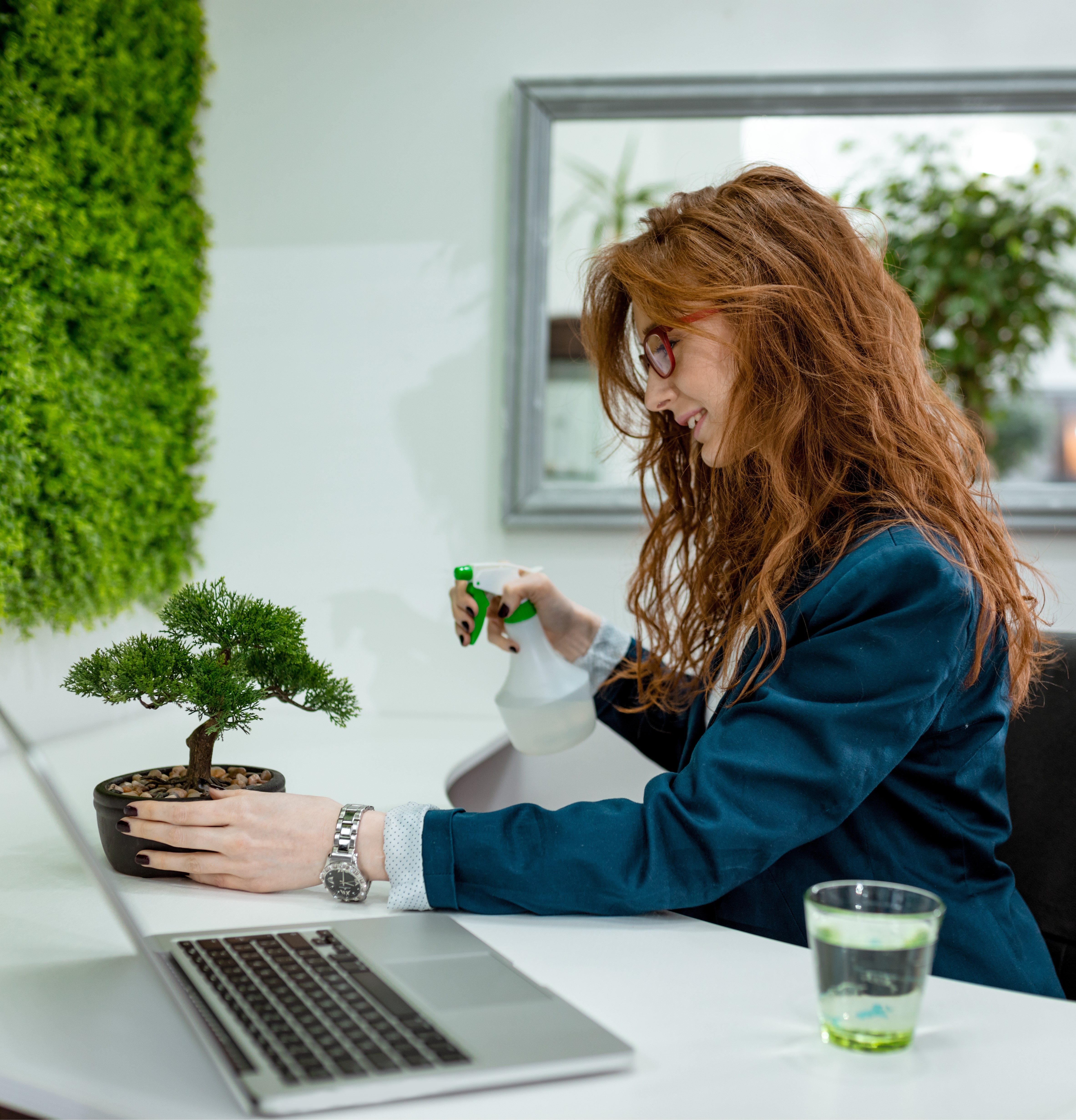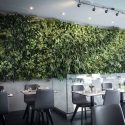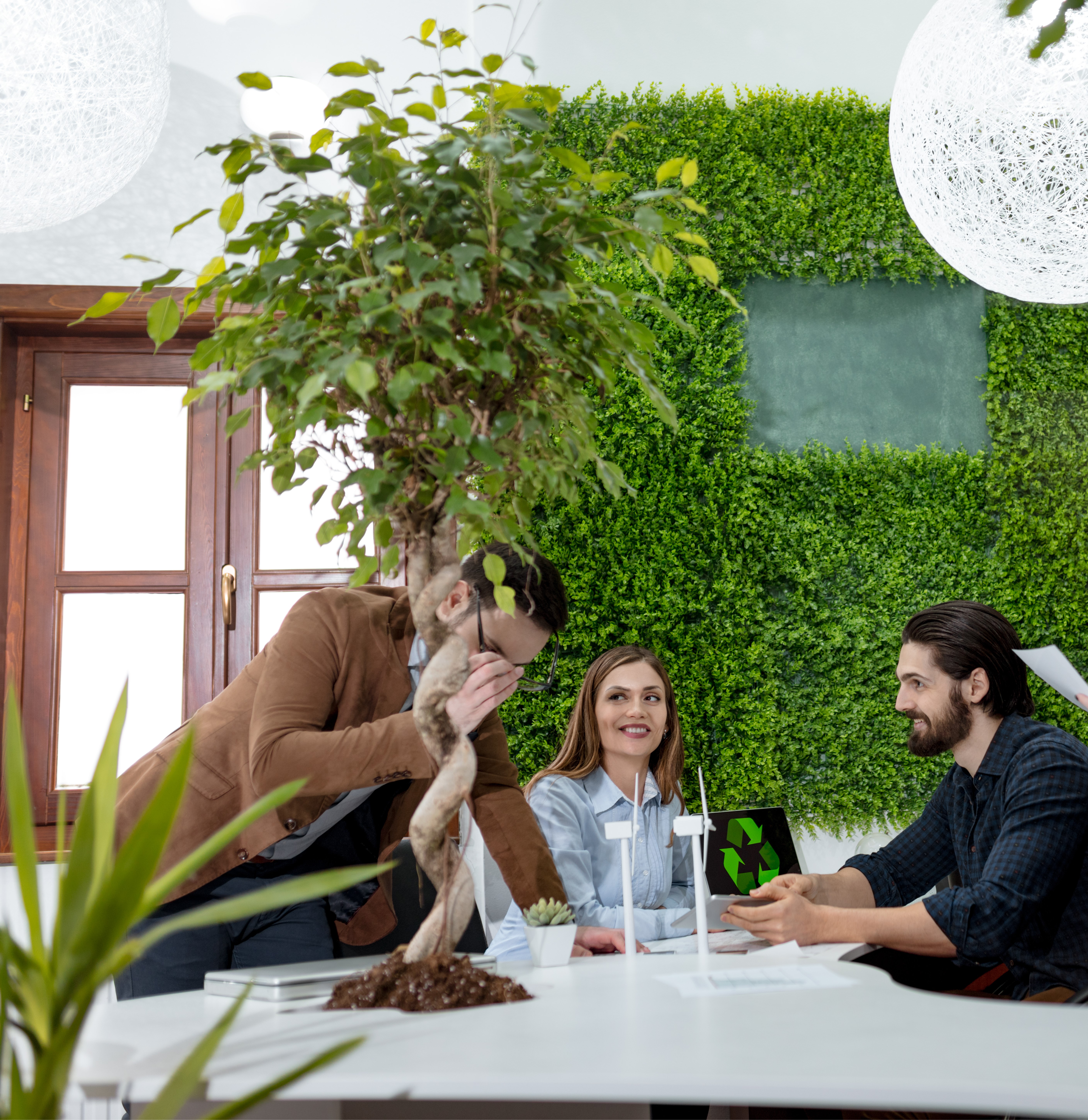Embracing Nature in Our Spaces
Have you ever felt an instant wave of calm wash over you as you step into a garden, or experienced a surge of vitality when basking in the natural sunlight? That’s the magic of nature at work, and it’s exactly what Biophilic Design aims to encapsulate within our built environments. This revolutionary approach is not just about aesthetics; it’s about creating spaces that fundamentally enhance our health, well-being, and productivity. For facilities managers looking to revolutionise their spaces, our Biophilic Design guide is crucial.
From boosting employee well-being to enhancing corporate sustainability goals, the benefits are as vast as they are vital. Let’s dive into the green heart of Biophilic Design and explore how it can transform our workplaces and hospitality spaces into thriving ecosystems of success.
Understanding Biophilic Design
What is Biophilic Design?
Biophilic Design is all about connecting humans with nature in built spaces. It’s not just about adding plants; it’s about strategically incorporating natural elements, materials, and light to awaken our deep connection with nature. This design principle is based on the belief that humans flourish in surroundings that mimic the natural world, resulting in better health, happiness, and efficiency.
History Behind Biophilic Design
The idea behind the term “biophilia” is the love of life and living systems. It was introduced by psychologist Erich Fromm in the 1970s and later popularised by biologist Edward O. Wilson in the 1980s. Wilson suggested that humans have a natural inclination to connect with nature and other living beings. The concept of Biophilic Design has developed from this idea, expanding from a specialised interest to a fundamental principle in architecture and interior design. It is shaping how we design spaces to support our innate connection to nature, rather than working against it.
Why is Biophilic Design So Effective?
When biophilic design elements are integrated effectively, they can enhance employee performance, health, and well-being in the workplace, ultimately aiding organisations in achieving peak physical and mental performance. Our natural inclination to safeguard and nurture the sources that nourish and support us on both physical and emotional levels leads us to naturally gravitate towards elements like plants, fresh air, and water. Despite the perception that incorporating these features may be a costly investment, economic considerations are actually a major factor driving the increasing popularity of biophilic design.
Elements of Biophilic Design
Key Elements of Biophilic Design
Biophilic Design incorporates elements like sunlight, plants, organic materials (wood, stone), water elements, and glimpses of the outdoors. It also includes using natural patterns and textures, visual and non-visual links to nature, comfortable temperatures, and better air quality. The aim is to develop spaces that are calming and rejuvenating for the eyes, body, and mind.
Applying Biophilic Design in the Office Space
Adding living green walls, maximising natural light, utilising materials that imitate natural designs, and incorporating outdoor views and spaces for relaxation have the potential to completely revamp an office space. These features have the ability to greatly improve employee happiness, innovation, and efficiency by cultivating an environment that lessens tension and promotes overall wellness.
Biophilic Design in the Hospitality Sector
In the hospitality industry, incorporating biophilic elements can completely transform the guest experience. From indoor waterfalls and rooftop gardens filled with to rooms featuring natural themes, these features can set a hotel apart, boosting occupancy rates and profits. The goal is to provide a one-of-a-kind, immersive experience that allows guests to connect with the beauty of nature.
Benefits of Biophilic Design Principles
Physical and Mental Health Benefits
Biophilic design is known to have a significant impact on health. It improves air quality and encourages activities that can improve health. It also reduces stress, boosts mood, and enhances cognitive function, which can benefit overall employee well-being and decrease absenteeism in the workplace.
Corporate Image and Sustainability Goals
Embracing Biophilic Design can greatly improve a company’s reputation, drawing in environmentally aware customers and high-calibre professionals seeking innovative employers. It supports sustainability objectives, enabling businesses to lessen their environmental impact and enjoy financial rewards from energy conservation and higher efficiency.
Success Stories
Biophilic Design in Offices: Amazon Spheres
The Spheres in Seattle, owned by Amazon, serve as a prime example of the positive impact of Biophilic Design in businesses. This exceptional area, brimming with over 40,000 plants, is created to enhance creativity and ingenuity among staff members, illustrating the advantages of incorporating nature into work settings, both economically and socially.
Biophilic Design in Hospitality
1 Hotel Brooklyn Bridge brings together natural elements, plants, and beautiful vistas of the New York City skyline, offering visitors a peaceful, nature-inspired retreat. This strategy not only improves the guest’s stay but also establishes a new benchmark in high-end sustainable tourism.
The Green Future of Design
Incorporating Biophilic Design into our work and leisure spaces is not just a fad, but a crucial step towards building environments that honour and utilise the potential of the natural world. The advantages are wide-ranging, from improved health and efficiency to environmental sustainability and financial benefits, highlighting its importance for both managers and designers in the industry.
Ready to transform your space with the healing power of nature? Reach out for a consultation to explore how Biophilic Design can redefine your environment and help you achieve your green goals with The Green Office Solutions.





